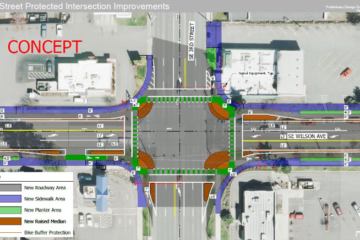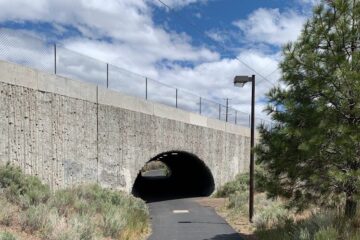Welcome to Great Community Bicycling.
July 20th, the Oregon cohort heads to Copenhagen, Svendborg, Korinth and Odense in Denmark. At each town we’ll be learning from policymakers, engineers, and planners and be able to experience these amazing transportation networks including walking, biking and transit systems.
Starting July 4th we’ll head to Nijmegen, Utrecht, and Amsterdam, in the Netherlands for a deep exploration of how bicycling and transit are integrated into their transportation networks.
I’ll post ideas and explorations along the way on this blog – please share this blog with your friends, neighbors, and colleagues and I will see you all back in Bend on July 20, 2022. Let’s meet over the course of this summer and have fun dialogs on these topics and see how we can learn from other communities and discuss ways to embed new ideas into our community’s networks.


4 Comments
Jan H · June 7, 2022 at 6:27 pm
Enjoy your journey! Look forward to the interesting design ideas you bring back.
David Green · June 12, 2022 at 2:38 am
Hi Robin! Thanks for sharing this. I sent the link to your blog to the Bend Bikes Board so maybe you’ll get some questions from them.
One of the things I’m really curious about is the use of different materials in crosswalks and round-abouts to add clues to drivers that something is happening other than a street. I watched a webinar about round-abouts recently and there was lots of use of brick and paving stones that added sound and visual cues to drivers. But I’m pretty sure Janet said that those materials wouldn’t be ADA compliant. Are they using that sort of thing in Denmark or the Netherlands? How does it work.
Thanks,
David Green
Robin · June 12, 2022 at 6:28 pm
Great question David – I am curious too. Bend had pavers downtown for the crosswalks across Bond and Wall Street, but those are now traditional white pavement markings. I have not noticed any differences in driver yielding.
When we are on the ground in Denmark and Netherlands, I will look at their markings and contexts and write about what I see.
Robin · June 24, 2022 at 8:18 pm
Hi David, here in Copenhagen they use cobblestones effectively to introduce different spaces. They’ll even grind down some pavers in a strip so you can bike a bit more comfortably while not attracting too many people on bikes into an area that is really focused for people on foot. They will put really rough cobbles at the driveway apron into a neighborhood to cue the driver to slow down. I haven’t really seen any used for crosswalks. They seem to use different materials to cue it is bike or it is ped. Like it seems all trails through parks are unpaved, crushed aggregate. And sidewalks look different than bike lanes. And if an area is for people on bikes and people on foot, they’ll use transverse cobble bars to kind of prevent higher speeds as the cobbles are rough to bike on.
Not even much pavement markings for crosswalks that I’ve noticed. I’ll try to pay attention to their crosswalks over the next few days though. Doesn’t seem like I see any pavers used for crosswalks.